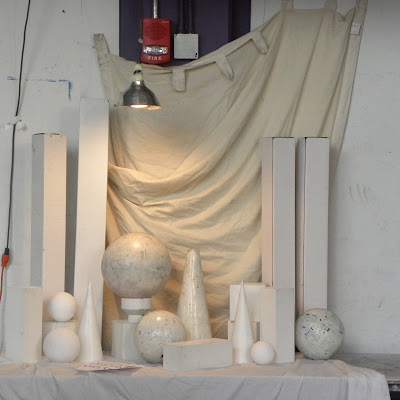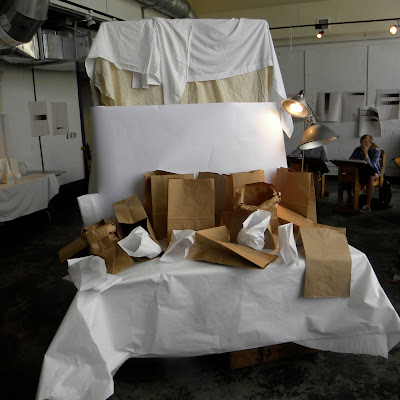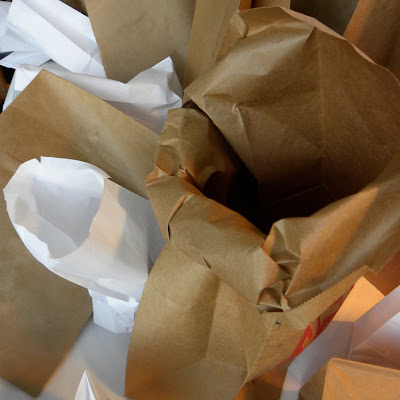When creating a value drawing, you need to shift out of line-drawing mode, and the best way to do this is to forbid yourself to draw a line, and focus on
areas of value. You might use the lightest of lines to get down the basic shapes. From there, build up the shading. Often the 'outline' will be at the join between two different values, and is
created by the contrast between the light and dark area.
Use the background to define foreground objects.Pay attention to drawing the shadows and background. Use them to provide contrast. A 'halo' of shading, like a vignette around the subject, is rarely successful. Leaving the background blank can work, but remember its okay to let an edge fade into the background - don't outline.
Don't use outlines.The aim of realist value drawing is to show the light and shadow and surface tones, creating a three-dimensional illusion. Outlines only define visible edges and don't tell us anything about light and dark. Linear drawing and value drawing are two different 'systems' of representation. Mixing up the two can be confusing, if realistic drawing is your aim.
Value drawing is done best with pencil or charcoal. Soft or medium hardness charcoals work well for this. You will have to try different brands as I found early on that not all charcoals are equal. So, be choosy about your tools!
work well for this. You will have to try different brands as I found early on that not all charcoals are equal. So, be choosy about your tools!
A line drawing is usually done on white paper with dark pencil or charcoal. A value drawing,on the other hand, often begins as a line drawing on toned paper with charcoal and white charcoal .
.
Some artists prefer to use white paper, which they then cover with powdered charcoal . You can then add lines and use a kneaded eraser
. You can then add lines and use a kneaded eraser to wipe out areas for light spots and highlights. Either way works.
to wipe out areas for light spots and highlights. Either way works.

















































































